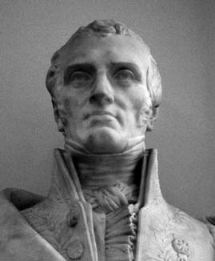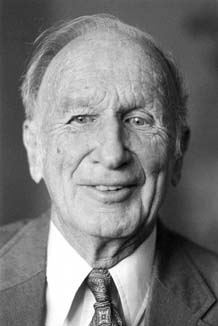Mathematics and Climate
Posted April 2009.
As April ushers in Mathematics Awareness Month, with this year's theme of Mathematics and Climate, what insights can mathematics offer into climate, and on a smaller time scale, the weather?...
Joseph Malkevitch
York College (CUNY)
malkevitch at york.cuny.edu
Introduction
When all else fails in making "small talk," one can always fall back on the weather. For those of us used to living where there is a discernible change in seasons, one can chat about it being too cold, too hot, too wet, or, despite how lovely the snow is, how much of a pain it has become to shovel so much of it recently. The changeability of the weather is one constant fact of life. However, what about climate?
I started as a graduate student in mathematics at the University of Wisconsin in the fall of 1963, and for the winter holidays, I headed for the airport for my first airplane trip (I had taken a bus to Madison from my home in New York, to carry my gear for the year out there). When I arrived at the airport I remember seeing a sign which reported that the temperature was -25 degrees. I had a moment of fright as to whether or not planes could really fly in -25 degree weather. Happily, Bernoulli's Principle and Newton's Laws apply in this range! Madison friends tell me that though Madison winters are still cold, they are not as cold as those of the middle 1960's. In a single person's lifetime 40 years is a large period of time, but not on a geological scale.
With news about melting ice caps and glaciers, the possibility of shore erosion and flooding due to raised ocean levels, changes in the amount of fresh water entering the Arctic Ocean disrupting the ocean current system, Earth's current and medium range climate is of great concern. There is much talk of global warming and there are some who deny that it is happening.
By its very nature climate, as opposed to weather, is concerned with issues over relatively long time scales, and, thus, what has been true for the last few weeks, days, or even years does not necessarily give a picture of the issues.
As April ushers in Mathematics Awareness Month, with this year's theme of Mathematics and Climate, what insights can mathematics offer into climate, and on a smaller time scale, the weather?
Mathematical tools to study climate
Although mathematics grows because it attempts to solve problems that arise outside of mathematics (e.g. Newton developed calculus in part to help understand gravity and the motion of the planets, Euler wrote a paper concerning where to optimally position the masts of a sailing ship), it also grows because mathematicians enjoy looking for patterns of all kinds for their own sake. Though, in part, the theory of games was developed to understand questions arising in economics and political science, once it was born it took off on its own, developing methods and ideas that were independent of applications settings. It might not seem that game theory has much to say about Mathematics and Climate, but the tools of game theory are being employed to try to help the world deal better with earthly issues that affect the climate. Because of its ability to abstract and generalize, mathematics is a unique tool for getting insight into the increasingly large number of domains that it is being applied to. Climate issues are just one of these.
When an issue is raised in an area outside of the mathematics community, people who have mathematical skills in these other areas often begin by constructing mathematical models of this new area. A mathematical model is a simplified representation of a more complex reality. The value of constructing a model is that one can explicitly see the simplifying assumptions being made, look at the "predictions" or "insights" offered by the model, and use this as a basis for either refining the model or doing experiments which help provide the feedback in seeing whether the model is providing one with the insights that are being sought.
A somewhat different approach is to take the area one is trying to get insight into and apply existing tools to study what are emerging as the key issues in this area. What are the major tools mathematics uses to probe climate issues?
Change is at the heart of a lot of phenomena in nature. The great mathematician and physicist Isaac Newton needed insight into the way one quantity might change with another in order to get the profound insights he did into the nature of gravity and the motion of the planets. To do this he "invented" calculus, building on the ideas of those who came before him. Calculus (among other things) is a mathematical tool to help understand how one quantity changes with respect to another. In modern terms if one has a function which relates one variable to another, for example, d = f(t), then one can find the average rate of change of d with respect to time. Thus, if d is distance and t is time, you can compute an average speed. For example if:

thus, at t = 0, d is 4, while at t = 4, d is 12. Since in 4 units of time the distance covered was 12, the average or mean speed for this "trip" was 3.
Newton saw his way from how to go from an average rate of change to an instantaneous rate of change. When you tell a friend that for your 150 mile trip your average velocity was 30 miles per hour, it can be concluded that you took 5 hours to make the trip, and during that trip your velocity at some of the times you traveled may have been 60 mph, 0 miles per hour as you waited for traffic to clear behind an accident or stopped for a cup of coffee. The "instantaneous" velocity at any time of your trip was available by looking at the "speedometer' on your car, which told you how fast you were traveling at that instant. The concept of the derivative of a function enables one to compute that instantaneous velocity from the function d = f(t) if f(t) is "nicely" behaved. This derivative is denoted dy/dt or f'(t), so when f represents a distance function, dy/dt represents a velocity, the instantaneous velocity.
Newton knew that if one has a polynomial function (for simplicity, think of n as a positive integer)

then its derivative will be

For example, if y = t2, then dy/dt = 2t. Furthermore, it is true in general that if y = g(t) has derivative g'(t) then y = kg(t) has derivative kg'(t), where k is a constant. Thus, the derivative of a function which has been multiplied by a constant merely multiplies the derivative by a constant. Furthermore, the derivative of a constant function is 0. This last fact makes sense because if a variable is not changing, then its instantaneous rate of change should be 0. It turns out that the derivative of the sum of two (or more generally a finite sum) of functions is the sum of the derivatives of these functions. (However, the derivative of a product does not generally obey the rule of being the product of the derivatives of the functions, though beginning calculus students master how finding the derivative of the product and quotient of functions does work.)
If we apply these ideas to the result to equation (1) above, we get that the derivative is t. We can conclude that at time 4 the instantaneous velocity is 4.
If we take a derivative of the velocity function, we get the second derivative which can be thought of as the instantaneous rate of change of the velocity with respect to time, and, thus, is what physicists call the acceleration.
It turned out that Newton was able to formulate many of nature's laws with this new derivative tool. Thus, the famous force law of is formulated as a differential equation.

In this equation a stands for the second derivative of the distance.
Similarly, Newton's Law of Cooling, which also has a connection to climate issues, was formulated as a differential equation.
Newton's Law of Cooling is used to model the temperature change of an object placed into a "new" environment of a different temperature. (Perhaps a small sphere at room temperature is inserted into ice water.) The law states that
where T is the temperature of the object at time t, E is the temperature of the environment (constant) into which the object is "inserted" and k is a constant. What this law says in words is that the rate of change of temperature of the object is proportional to the difference between the (starting) temperature of the object and that of the surrounding environment.
It is easy to verify (to do this one needs to know that the derivative of ekt is kekt) that the "general solution" of this differential equation is:

Based on the predictions made in solving differential equations such as the one associated with Newton's Law of Cooling, one can do experiments or make observations which can confirm the accuracy with which the differential equation serves as a model for the phenomenon to be explored.
What happens when a quantity changes or varies with more than one other variable? This is much more common because it is rare that changes in one variable only depend on the change in one other variable. How does one deal with rates of change now? One approach is to fix all of the variables except one, and compute the derivative with respect to the one remaining variable while treating all of the other variables as constants. This is the idea of a partial derivative.
Here is a simple example:
If
y = 4s2t3
then
For the first line above we treat t as a constant and find the "ordinary" derivative with respect to s, and for the second line above we treat s as a constant and find the "ordinary" derivative with respect to t. It is not difficult to give these partial derivatives geometric interpretations using three-dimensional geometry, in this case.
Many important laws in the physical sciences can be formulated in terms of partial differential equations. Examples of these are the heat equation, the wave equation, and the Laplace equation. Work on these equations, born of interest in mathematical physics for a period of many years, is associated with many of the most famous practitioners of mathematics: Euler, Laplace, Cauchy, and Fourier.
Somewhat less well known are the engineer and physicist Claude-Louis Navier
who lived from 1785 to 1836 and the physicist and mathematician George Stokes, who lived from 1819 to 1903 .
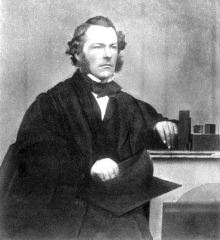
These scholars became interested in understanding the motion of fluids. Newton had also been interested in fluids, and he initiated what today are known as Newtonian fluids. A Newtonian fluid is one which can be described in terms of its viscosity. Intuitively, viscosity measures the fluid's resistance to flow. Honey and water are fluids but they display very different viscosity. However, with mathematical tools that were developed after Newton, more progress could be made. The more complex Navier-Stokes equations (they are partial differential equations) also apply to Newtonian fluids but carry the modeling to a more detailed level. These equations can be used in a variety of different settings. The fluid flow work that was done by Euler and involves what today are known as the Euler equations, can be viewed as a "limiting case" of the Navier-Stokes equations. However, though the Euler and Navier-Stokes equations have led to very fruitful insights into fluid flow and have been of use to engineers concerned with fluids, mathematically the situation is not all that satisfactory. Part of the issue, as noted by Charles Fefferman (Princeton), an expert in the field, is "Solutions of the Euler equation behave very differently from the solutions of the Navier-Stokes equation. " Furthermore, "There is no consensus among experts as to whether Navier-Stokes or Euler solutions exist for all time, or whether instead they "break down" at a finite time. Definitive answers supported by rigorous proofs seem a long way off." Fluid flow problems vary in the nature of fluid involved, blood, salt water, fresh water, etc., to whether the flow is in a big pipe, small pipe (capillary) or irrigation ditch. The mathematical modeling issues that arise in trying to handle the various circumstances has increased both our practical and theoretical insights.
The Navier-Stokes equations are used in part as the basis for the growing field of computational fluid dynamics. Many laboratories devoted to this area have sprung up around the country. Due to the tremendous amount of computer power needed to carry out numerical calculations with these models, and solving problems related to the Navier-Stokes equations, mathematicians and computer scientists have been involved in developing faster and more flexible "supercomputers."
Somewhat tied to the Navier-Stokes equation is work done by Osborne Reynolds, for whom the Reynolds number is named.
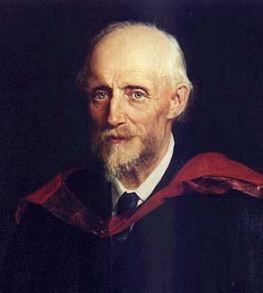
Reynolds' work and the concept of the Reynolds number is related to issues of fluid flow and the phenomenon of turbulence that occurs in many flow situations. When fluids flow rapidly, their behavior transitions from behavior that can be somewhat understood mathematically to "turbulent" flow which is hard to predict and to model. Yet, many of the most important questions arise exactly in these "gray" areas.
The complexities of trying to understand climate have drawn on mathematics whose roots go surprisingly far back in mathematics' history. Some of the most important and earliest work in mathematics deals with issues related to fluids and fluid flows. Although work on fluids, so called Newtonian Fluids, goes back to a time prior to Newton, it was not until the middle of the 20th century that a fuller understanding of fluids emerged. With the developments of commercial computers in the 1950's came a surge of attempts to use computers to make weather predictions. It soon became clear that in addition to the difficulties of finding numerical solutions of differential and partial differential equations (in many cases it is not possible to find "closed form solutions," that is, solutions which can be expressed in terms of formulas that use well understood functions), there were deeper issues involved.
Albedo
As a simple window into how complex it becomes to probe questions about climate, let us consider the concept of albedo. This was a new word for me when I first heard it at a session dealing with climate at a meeting of the American Mathematical Society. The word albedo is derived from the Latin word albus, which means white. We are all familiar with the idea that when light hits a mirror, most of it is reflected by the mirror but when the same light hits a fabric which you might be wearing, little is reflected. The way that light or other energy is reflected from a surface depends on the nature of the surface. The concept of albedo is to generalize this situation. The idea is to get a way of measuring how much electromagnetic radiation, from the sun or more generally from space (in fact, any source), is reflected back off the surface of a planetary body such as Earth, our moon, or Mars.
The origins of ideas that are related to albedo go back surprisingly far, and show the fact that mathematical insight and talent is not the monopoly of any particular country. There are various attributions but there is no "harm" in calling attention to mathematical pioneers of work being carried out today.
If light, or some other form of electromagnetic radiation, hits the "surface" of a planet's atmosphere, a river, a corn field, a glacier, or an ice flow, a certain portion of this energy is absorbed and a certain amount is reflected. If the energy is reflected off the atmosphere it is bounced back into space. If it bounces off a corn field or a glacier it may or may not be trapped by Earth's atmosphere and go into warming Earth, or it too may be released back into space. Thus, the amount of energy from outside Earth's "energy system" that becomes trapped by Earth is a very complex issue to understand.
The attempt to understand what happens to light as it goes from one "medium" to another seems to have started with the work of Pierre Bouguer.

Bouguer, who lived from 1698 to 1758, was involved with projects such as work to measure the size of a "degree" along a meridian (a longitude line) near the equator. Because Earth is not a perfect sphere, attempts to understand how much it bulges near the equator were made. Bouguer was also involved with hydrography, which today would include oceanography, a subject that deals with all aspects of water and its properties. In 1729 his work entitled "Essai d'optique sur la gradation de la lumière" appeared. In this work he attempted to understand the "amount" of light (energy) that was dissipated as light "descended" into Earth's atmosphere.
What Bouguer started, today is often known as the Lambert-Beer (or Beer-Lambert) Law. The Lambert of this law refers to Johann Heinrich Lambert, who was born in France but died in Germany.

Lambert lived from 1728 to 1777. Better known than Bouguer, he was a very accomplished mathematician. He had ties to both Euler and Lagrange and was one of the pioneers of ideas that matured into non-Euclidean geometry. However, his most famous accomplishment is his role in being the first to rigorously show that the value of Pi (the ratio of the circumference of a circle to its diameter) is irrational (e.g. can not be expressed as the ratio of two integers). Our debt to Lambert with respect to insights into climate is related to his publication Photometria, which he published in 1760. This is an early account of the area that today would be called photometry. In this publication Lambert deals with the issue of the attenuation of light energy as it goes from one medium to another (in particular fluids). He also dealt with the issue of the way that light gets absorbed or scattered when it hits a surface. In his honor, the term "Lambert surface" is used to describe a surface where incoming energy is "scattered" the same way no matter how it hits the surface. He is also honored by the unit of luminosity density, which is known as the lambert. This unit, sometimes called the luminance, is measured in candela per square meter. Candela in turn refers to the amount of power coming from a light source in a particular direction. An older version of this term is the term candle as in foot-candle. Lambert's work was further developed by the physicist and professor of mathematics at Bonn, August Beer. Beer lived from 1825 to 1863, and he helped improve and make more general the ideas of Lambert.
Albedo turns out to be a subtle and complex idea to study because in the case of a planet with a significant atmosphere such as Earth (rather than Earth's moon) the albedo can change with direction of the energy arriving, the time of year, and even at a particular place. One often sees values of the albedo that differ by a fair amount, though some sources list a range of values for a particular solar system object. As a basis for comparison, here are some albedo values. However, be warned I have been astonished by the wide variations on values I have seen for the albedo (here given as percentage of reflected sunlight) of the same "material":
|
dessert
|
25-30
|
|
clouds
|
50-55
|
|
water
|
5-10
|
|
asphalt
|
15
|
|
uncultivated fields
|
26
|
|
green leaves
|
5-25
|
|
fresh snow
|
80-90
|
|
old snow
sea ice
|
45-70
30-40
|
|
dry sand
|
35
|
|
rain forest
|
12
|
Climate models
Ultimately, nearly all of the energy involved in understanding Earth's climate comes from the sun or, to a much lesser extent, from other stars. This energy comes in the form of light or other kinds of electromagnetic energy. What happens to this energy once it "arrives" at Earth? This is a very complicated question because energy that arrives at a portion of Earth covered by clouds has a different fate from energy that hits a large tract of dark land or a large tract of sea ice. Quite early in the history of mathematics and science, scholars have been trying to understand this issue. This led to the concept of albedo and all its complications hinted at in our discussion above. In addition to the consequences for climate driven by the sun (which has energy cycles and complex behavior of its own), there are some terrestrial features that drive climate.
To give just a hint of how these systems are intertwined, if there is a major volcanic eruption, large amounts of dust enter the atmosphere which affects the amount of electromagnetic radiation which reaches Earth's surface. This in turn affects the temperature of the oceans and the ocean currents, the size of the polar ice caps, and the amount of water vapor in the atmosphere. Many feedback loops can occur with hard-to-predict consequences, both short-term and long-term .
Just as we have an interest in the "climate" pattern on planets such as Mars, Venus, and Mercury, even though these planets presumably do not have life on them, Earth would have a climate if there were no people on the planet. There would still be oceans, clouds, volcanic eruptions, and other energy events which would affect the long-term patterns of atmospheric temperature, cloud cover, rainfall, etc.
However, the issue of how the climate of Earth has been affected by the presence of life on Earth is a complex and controversial one. Has the major uptick in the burning of fossil fuels that has occurred on Earth in the last 125 years affected its climate? The prevailing scientific information is that it has, though predictions about what the medium range consequences of this and beyond will turn out to be are still in flux. Mathematical and statistical ideas have played an important role in seeing the changes that human activities have created. An important aspect of the debate about human effects on climate has centered around greenhouse gases and aerosols, as well as the "carbon footprint."
One way to control greenhouse gases and manage the carbon footprint has been for international agreements to be reached to try to better the situation. Such agreements can involve voluntary or mandatory compliance with treaties and other agreements that would help avoid damage to Earth in the future. Perhaps surprisingly, ideas from the mathematical theory of games have suggested ways to encourage countries to comply with these international agreements by having the agreements include "self-enforcing" features. The idea is to have countries abide by these agreements because not to do so is harmful to them! Game-theoretic ideas of this kind involve an interdisciplinary field, mechanism design, which concerns development of environments where the tendency of players in conflict situations to "lie" about their preferences for their own benefit are not optimal strategies. The goal is put "players" in situations where honesty and compliance is the best policy.
Although mathematical game theorists have been rewarded with many high honors, the Nobel Memorial Prize in 2007 was shared by three people with mathematical connections: Leonid Hurwicz, Eric Maskin, and Roger Myerson. Both Maskin and Myerson have doctorate degrees in applied mathematics from Harvard University. Hurwicz followed a complex path to his work in mechanism design. The prize citation involves their contributions to mechanism design and game theory.
How does one deal with changes of climate on Earth? One approach is to try to chop up the surface (and atmosphere) of Earth into lots of small cells, and to use data from the individual cells to try to build up a more global understanding. The diagram below shows a way of chopping up a sphere into a bunch of cells based on latitude and longitude lines. Approaches of this kind are put together with numerical methods for dealing with partial differential equations.
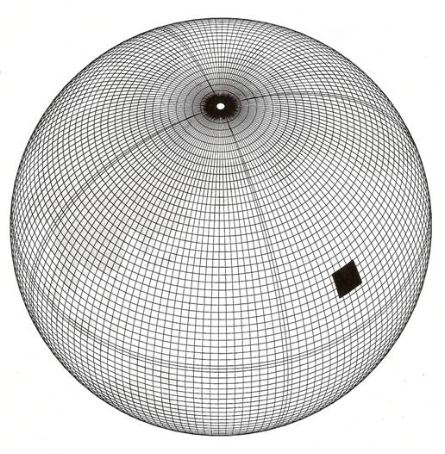 (Courtesy of Paul Ginoux, Geophysical Fluid Dyamics Laboratory, Princeton)
(Courtesy of Paul Ginoux, Geophysical Fluid Dyamics Laboratory, Princeton)
A different way to think of chopping up Earth or a part of Earth into small cells is illustrated in the diagram below.

(Courtesy of Paul Ginoux, Geophysical Fluid Dyamics Laboratory, Princeton)
Mathematics has given insight into many aspects of weather and climate, one of which has particularly captured the public imagination, chaos. Many systems we are accustomed to dealing with have "noise." We are used to noise of various kinds: static on the radio, conversations at other tables in a crowded restaurant, or the hums one hears from appliances around the house. In all of these situations there is a "randomness" or chance element in what we experience. The hum is not a single tone but is constantly changing. The static on the radio comes and goes in frequency and intensity. Thus, it was quite surprising when it became widely known that seemingly "noisy" situations arose from systems that involved nothing random, but were totally deterministic. This phenomenon has come to be called "chaos" or "chaotic behavior." The mathematical roots of insight into deterministic chaos go back to the great French mathematician Henri Poincaré.

However, in more modern times one early pioneer in noticing chaos was the meteorologist Edward Lorenz who lived from 1917 to 2008.
Lorenz started his academic career by studying mathematics as an undergraduate at Dartmouth and earned a master's degree in mathematics from Harvard. Later, he received a doctorate from MIT in meteorology with a thesis entitled: "A Method of Applying the Hydrodynamic and Thermodynamic Equations to Atmospheric Models," where he put his mathematical training to work. Lorenz came across the phenomenon now known as chaos in conjunction with the study of the behavior of the solution of differential equations.
As we celebrate Mathematics Awareness Month we cannot help but be impressed by how many parts of mathematics (differential equations, partial differential equations, game theory, etc.) are contributing to our insights into climate so that we can help insure that Earth will be a safe and healthy place for mankind to prosper.
References:
Daley, R., Atmospheric Data Analysis, Cambridge U. Press, Cambridge, 1993.
Enting, I., Inverse Problems in Atmospheric Constituent Transport, Cambridge U. Press, Cambridge, 2005.
Fowler, A., Mathematical Models in the Applied Sciences, Cambridge University Press, Cambridge, 1997.
Gowers, T. (editor), The Princeton Companion to Mathematics, Princeton U. Press, Princeton, 2008.
Houghton, J., The Physics of Atmospheres, Cambridge U. Press, Cambridge, 2001.
Kleidon, A. and R. Lorenz, Non-equilibrium Thermodynamics and the Production of Entropy: Life, Earth, and Beyond, Springer, New York, 2004.
Mathieu, J. and J. Scott, An Introduction to Turbulent Flow, Cambridge U. Press, Cambridge, 2000.
Palmer, T. and R. Hagedorn, Predictability of Weather and Climate, Cambridge U. Press, Cambridge, 2006.
Peixoto, J. and A. Oort, Physics of Climate, Springer, New York, 1992.
Wallace, J. and P. Hobbs, Atmospheric Science: An Introductory Survey, Academic Press, Burlington, 2006.
Wilks, D., Statistical Methods in the Atmospheric Sciences, Academic Press, Burlington, 2005.
Joseph Malkevitch
York College (CUNY)
malkevitch at york.cuny.edu
Those who can access JSTOR can find some of the papers mentioned above there. For those with access, the American Mathematical Society's MathSciNet can be used to get additional bibliographic information and reviews of some these materials. Some of the items above can be accessed via the ACM Portal , which also provides bibliographic services.













